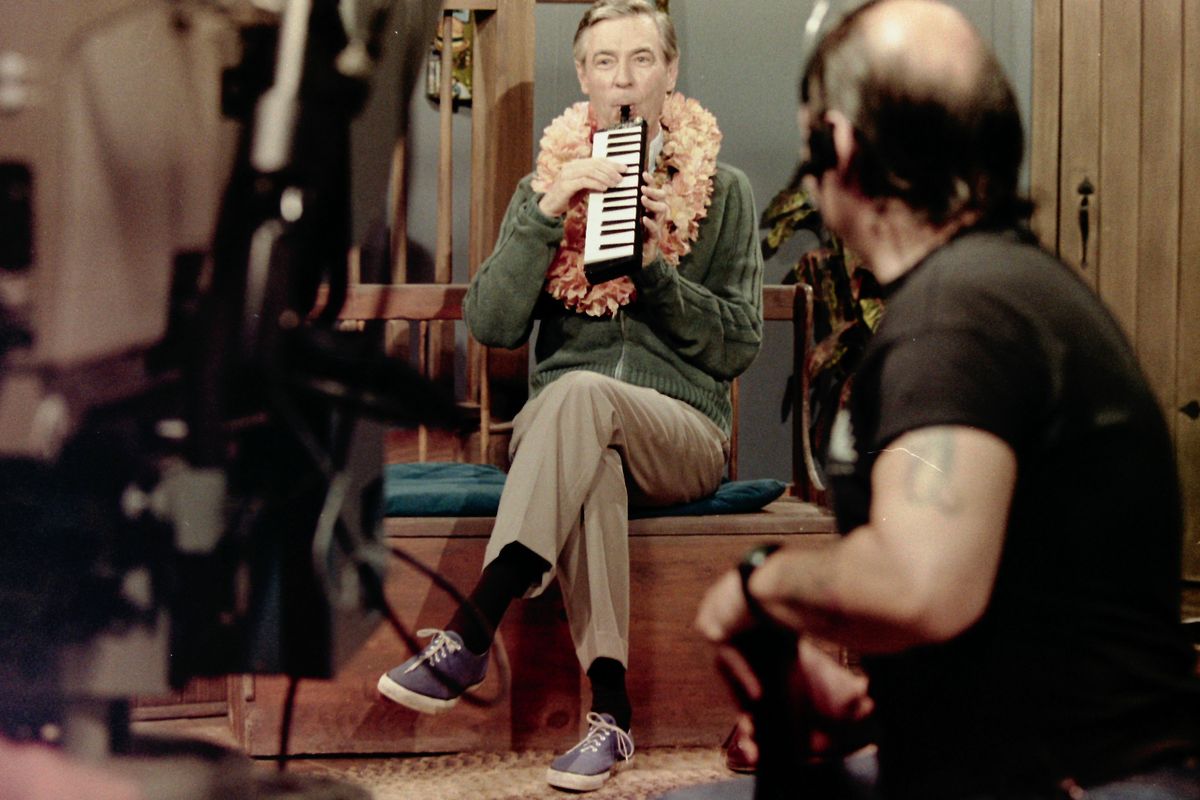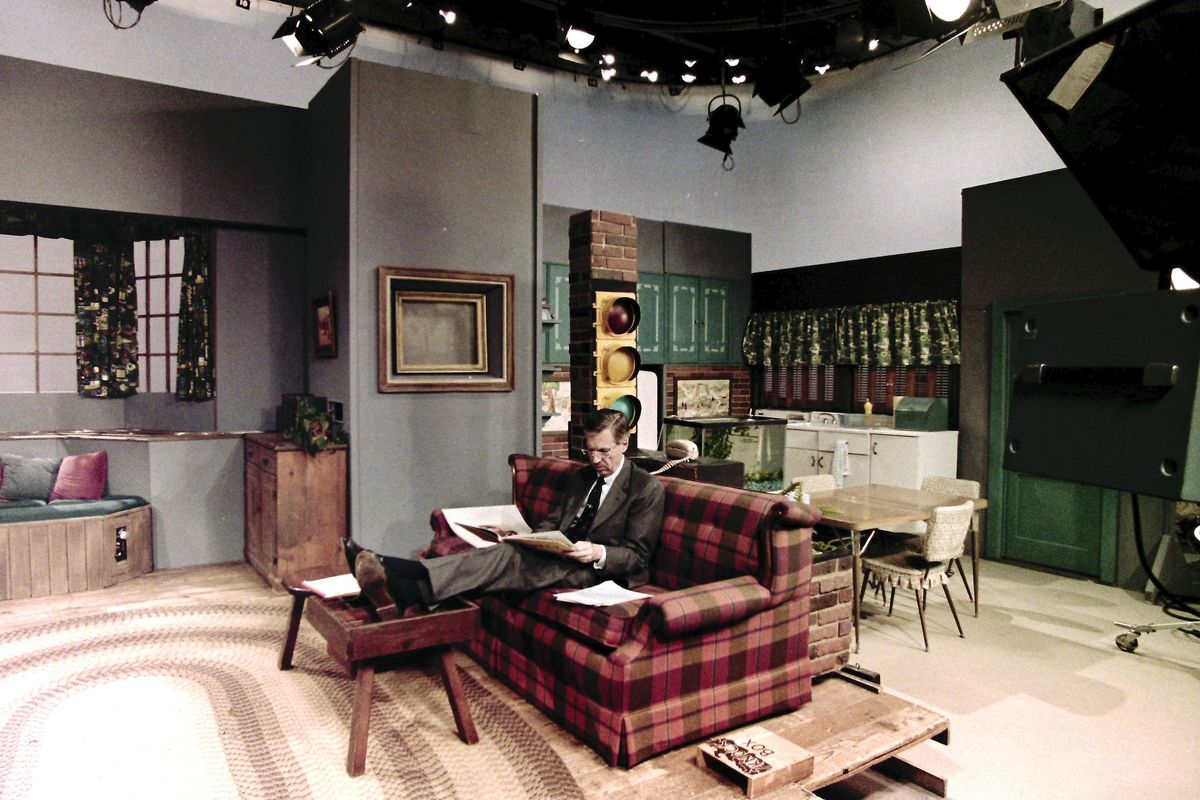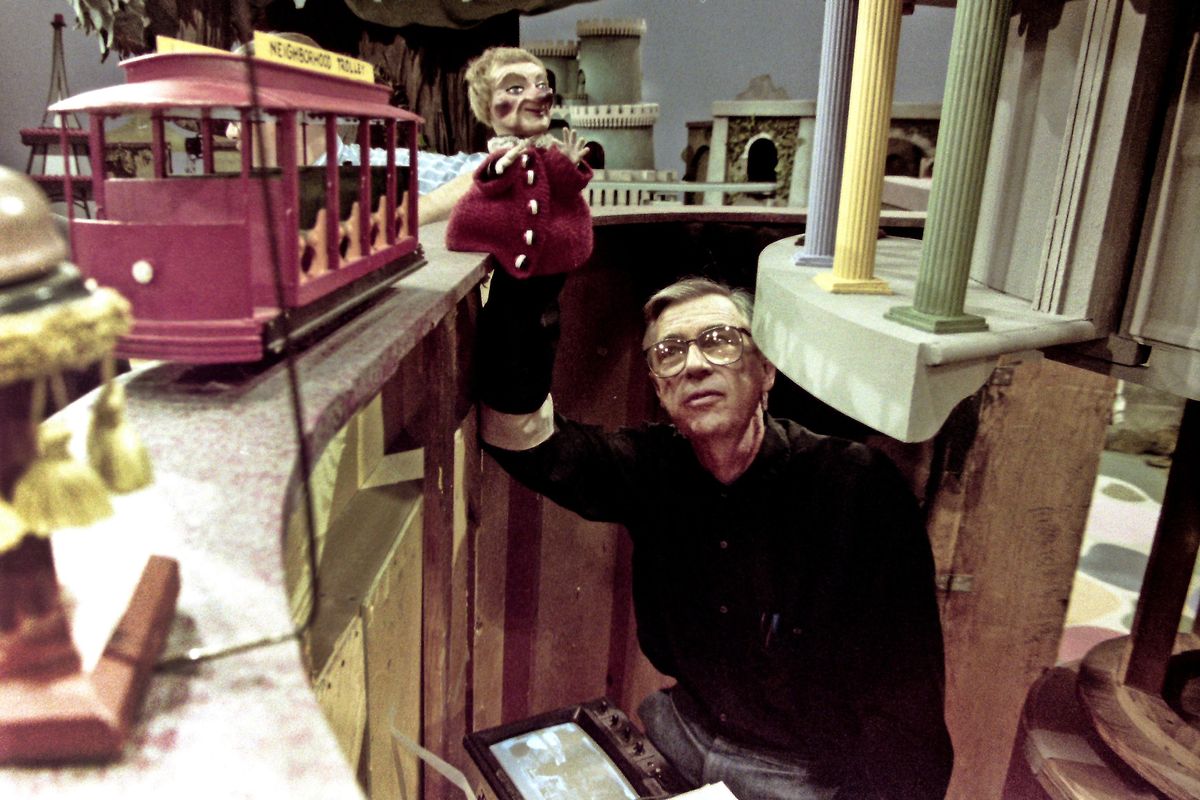‘It’s you I like’: Spokane educators reflect on Fred Rogers’ legacy as moviegoers can rediscover a hero

Fred Rogers was a man of routine.
When an episode of “Mister Rogers’ Neighborhood” was coming to a close, he changed out of his idiosyncratic cardigan and sneakers while singing.
“You always make each day such a special day,” Rogers would say as he made direct eye contact with the child watching on the other side. “Do you know how? By just your being you. There’s only one person in the whole world like you. That’s you, yourself.”
For decades, even if a child heard no other kind words all day, they could count on hearing some from the friendliest man in the neighborhood.
Lisa Hoxie, a School of Education lecturer at Whitworth University, said Rogers looked at children holistically and was undeniably ahead of his time. She plays his videos for her students as a model of an educator who understood how children should be treated.
Fred Rogers makes notes between takes on the set of his children's television program, "Mister Rogers' Neighborhood," in Pittsburgh on June 28, 1989. (Gene J. Puskar / Associated Press)
“I have students who are going to be future teachers, and often we have to talk about pedagogy and strategies for the classroom,” Hoxie said. “Fred Rogers reminds us of the whole child: the feelings, the insecurities, the strengths and weaknesses that each of us have, and really embracing that uniqueness and knowing that we’re loved.”
Hoxie was born in 1976, and she chokes up when talking about the experience of turning on the television and inviting Rogers into her living room as a child.
“One of the songs that we talk about is, ‘It’s you I like, it’s not the things you wear,’ ” Hoxie said, reciting the popular song from memory. “It’s not the way you do your hair, but it’s you I like. The way you are right now, the way down deep inside you, not the things that hide you, not your toys, they’re just beside you, but it’s you I like, every part of you. Your skin, your eyes, your feelings, whether old or new.’ And then he reminded children, ‘I hope that you’ll remember even when you’re feeling blue, that it’s you I like. It’s you, yourself, it’s you.’ ”
The rhythm and pacing of Hoxie’s voice was an undeniable echo of the very way Rogers said those words so many times, and Deborah Nieding, Gonzaga University associate professor of teacher education, said the volume and pattern of Rogers’ voice is also an important lesson in how to work with children.
“Just the cadence of his speech helps young children to feel a sense of peace and safety and trust,” Nieding said. “Also, the structure of his program was very consistent. Young children need that type of structure and consistency. They need to have some predictability in their lives, especially young children that might not have that in a predominant way in their early literacy language acquisition.”
In a 1998 Esquire profile of Rogers, Tom Junod described Rogers’ voice as “the voice dressed in sweater and sneakers, the soft one, the reassuring one, the curious and expository one, the sly voice that sounds adult to the ears of children and childish to the ears of adults.”
Junod’s profile is the heart of the newly released Tom Hanks biopic, “A Beautiful Day in the Neighborhood,” which explores a fictionalized version of the relationship between Rogers and Junod. The “Can You Say … Hero?” profile starts by describing the stuffed animal Junod had as a child, Old Rabbit, “barely a rabbit at all but rather a greasy hunk of skin without eyes and ears, with a single red stitch where its tongue used to be.”
Junod lost Old Rabbit out a car window, and Rogers had inquired about it when he first met Junod. At the end of the profile, Junod wrote about praying with Rogers, who was a Presbyterian minister.
“ … And it hit me, right then, with my eyes closed, that this was the moment Fred Rogers – Mister Rogers – had been leading me to from the moment he answered the door of his apartment in his bathrobe and asked me about Old Rabbit,” Junod wrote. “Once upon a time, you see, I lost something, and prayed to get it back, but when I lost it the second time, I didn’t, and now this was it, the missing word, the unuttered promise, the prayer I’d been waiting to say a very long time.”
Junod was recently interviewed about the movie and his friendship with Rogers by Rick Lee James on the “Welcome to the Neighborhood: A Mister Rogers Tribute Podcast.”
“I didn’t expect what happened,” Junod said on the Nov. 18 podcast. “What happened was that he recognized that I was a hurting soul who needed something, and decided to methodically go around and give it to me. … He saw more in me than I did in him, at the beginning.”
In his profile, Junod said Rogers liked the “simplifying force of definitions.” Hoxie said Rogers “actually helps kids define the words that they’re hearing, the words used in their homes, and settles fear around difficult topics.”
Both Hoxie and Nieding marveled at how Rogers would tackle difficult subjects with children – divorce, segregation, assassination, war.
“It’s OK to be sad. He did not shy away from issues that children were grappling with, and he didn’t condescend to them either,” Nieding said. “And do I think there’s a correlation between no more Mr. Rogers and all the trauma? I don’t know, maybe.”
Both Nieding and Hoxie are excited about seeing the movie. Nieding said she hoped the movie would “inspire some people to re-enact some of the beautiful parts of the peaceful, calm way of communicating with young children.”
“Sometimes I think we stray from the simple, eloquent and obvious,” Nieding said. “I would like to see my teacher candidates and others go back to that relationship first. The things like, have a calm voice when you talk to young children. Listen when young children want to talk to you.”
Rogers, born in Latrobe, Pennsylvania, died in 2003 of stomach cancer. His show ran from Feb. 19, 1968, until Aug. 31, 2001.






